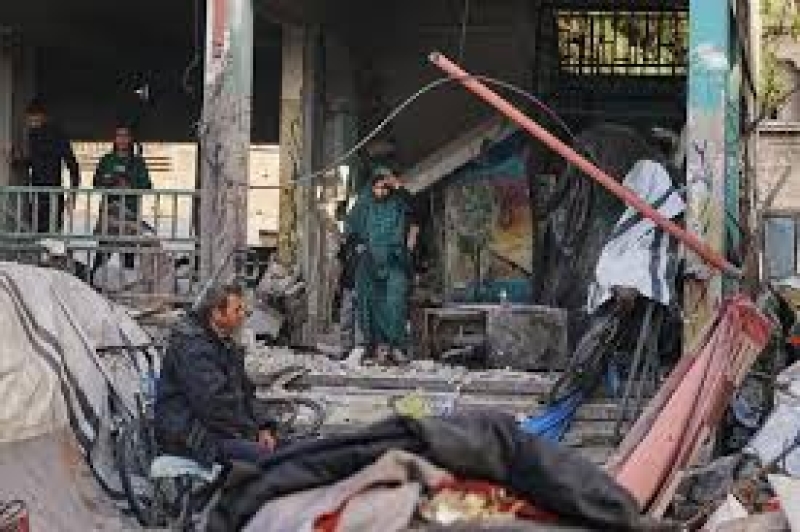- CA Yunus pays homage to Liberation War martyrs on Victory Day |
- Bangladesh capital market extends losing streak for second day |
- Bangladesh celebrates Victory Day Tuesday |
- 'Different govts presented history based on their own ideologies': JU VC |
Israeli strikes kill 52 in Gaza, 36 in school shelter

At least 52 people were killed in Israeli airstrikes across the Gaza Strip on Monday, with 36 of the casualties occurring in a school that had been converted into a shelter, according to local health officials.
The strike, which took place while many were asleep, triggered fires that burned victims' belongings. The Israeli military claimed it was targeting militants from Hamas and Islamic Jihad who were operating a command center from inside the school.
Fahmy Awad, head of Gaza’s emergency services, confirmed the deaths and said dozens were injured in the strike on the Daraj neighborhood in Gaza City. Among the victims were a father and his five children. Footage from the scene showed rescuers battling flames and pulling charred bodies from the debris.
In a separate airstrike in the northern Gaza town of Jabalya, 16 members of the same family, including five women and two children, were killed. The bodies were brought to Shifa Hospital, officials said.
The Israeli military blames civilian casualties on Hamas, alleging the group uses civilian infrastructure to shield its operations — a claim the militant group denies.
Meanwhile, three projectiles were fired from Gaza on Monday. According to the Israeli military, two fell inside the enclave, and the third was intercepted.
Renewed Offensive and Mounting Toll
Israel resumed its military offensive in March after a ceasefire with Hamas collapsed. Officials say operations will continue until Hamas is either dismantled or disarmed and until all remaining hostages from the October 7, 2023, attack are returned. Of the 251 people abducted, Israel believes 58 are still in captivity, about a third of them alive.
The Gaza Health Ministry says nearly 54,000 Palestinians have been killed since the war began, with more than half being women and children. The ministry does not differentiate between civilians and combatants in its reporting.
Vast swathes of Gaza have been reduced to rubble, displacing nearly 90% of the population. Hundreds of thousands now live in overcrowded shelters or tent camps.
Controversial Aid Plan Faces Resistance
Last week, Israel began allowing limited humanitarian aid into Gaza after blocking all goods for over two months. Aid agencies say the supplies fall far short of what's needed to stave off famine.
A new aid distribution initiative, the Gaza Humanitarian Foundation, is expected to begin operations this week. The group, backed by Israel and the U.S., plans to establish distribution points protected by private security contractors. However, the United Nations and major aid organizations have refused to cooperate, saying the plan violates humanitarian principles by giving a warring party control over aid.
Hamas has also urged Palestinians not to engage with the new aid system, claiming it supports Israel's goal of displacing Gaza’s population of over 2 million. Israel has suggested it wants to facilitate what it calls the "voluntary migration" of Gazans — a stance widely rejected by Palestinians and the international community.
The American heading the aid foundation, Jake Wood, abruptly resigned on Sunday, stating the organization would not be able to operate independently. It remains unclear who is funding the initiative.
East Jerusalem Tensions Rise
In Jerusalem, tensions flared during an annual ultranationalist march marking Israel’s 1967 capture of East Jerusalem. Some participants chanted anti-Arab slogans and reportedly harassed Palestinian residents.
A small group, including an Israeli lawmaker, entered the compound of the U.N. agency for Palestinian refugees (UNRWA), which Israel has barred from operating. The compound has remained mostly empty since January due to security concerns. The U.N. maintains it still holds the premises, which are protected under international law.
Israeli police have not issued a statement on the incident.

